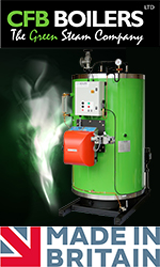The benefits of factory floor automated set-up and data collection to improve compliance and overall performance
“A wealth of data exists on the Factory Floor if only we could turn it into valuable information early enough to be of use to us” has often been said.
Well now you can.
A number of problems surround the automation of factory floor data, ie moving away from paper based systems.
Firstly, it has to be said that paper recording has served the food and drink industry well for many decades and this fact alone makes it more difficult to dump it in exchange for computer based data collection.
Paper is easy to use, train people to use and is omnipresent…in that it can be used anywhere and everywhere. When an extra test is required to be carried out and recorded then another sheet of paper is easily generated.
Once we move away from paper and install a computer based system in its place, greater discipline is required. Obviously it would be cost prohibitive to have a computer terminal everywhere that a sheet of paper previously existed.
The completion of computerised records also imposes a higher level of discipline in that everything can be time stamped (actual completion date and time is known) whilst the process and timing of checks to be carried out can be far more structured and disciplined automatically.
One of the biggest gains though is in the computerisation of production line/process set up where this can be fully or partially automated to eliminate or minimise set-up errors.
One area where this is increasingly carried out is in automated coding and labelling verification. This change has been largely driven by the number of coding and labelling errors detected by supermarket chains largely brought about by greater manufacturing complexity due to the trend towards ever shorter batch runs and frequent product changeovers. One supermarket chain alone experienced more than 320 such errors within the past 12 month period (almost one per day of the year). Such errors often cause major disruption, wastage, cost and can also attract penalties for non-compliance.
But these errors are some of the easiest to eliminate through automation hence the number of companies who have set up to provide systems aimed at the elimination of such errors.
Though it makes good commercial sense for any business at risk to protect itself, its customer relationships and its market share through the implementation of these systems, it often makes for a poor financial justification to do so in isolation, in response to retailer’s demands, whilst keeping everything else on paper.
It’s far more cost effective to use the opportunity and embrace automated coding and labelling compliance as an important aspect of good manufacturing practice whilst eliminating all factory floor paperwork and, as a result, directly improving manufacturing compliance and overall effectiveness in the process.
When a large dairy chose to combine two projects by linking factory floor compliance (including coding and labelling verification) with the desire to improve efficiency, Harford Control was their obvious choice.
At their largest milk bottling plant in the Midlands we were asked to replace four old systems with one fully integrated system to facilitate: automated coder set-up, on-line barcode verification, off line statistical weight/volume control and paperless quality assurance, and thereby eliminating most factory floor paperwork and creating instant real time visibility of operational performance such that they had never previously experienced.
Further developments provided schedule download from Oracle, integration/interlock with their SCADA milk processing system (ensuring a match between the milk type sent to each line and that being bottled) and an automated link with their WMS to reconcile production output with warehouse stock control.
Not only was factory floor paperwork virtually eliminated, production and labelling errors minimised, quality consistency improved and material wastage reduced, but OEE (overall equipment effectiveness) was doubled through the system rollout. In fact this was such a successful application that the Harford system was then rolled out across most other sites including all milk bottling, spreads and some cheese packing (the cheese packing site with the shorter batch runs, frequent changeovers and higher levels of complexity).
Controls at the cheese and spreads factories were further enhanced through the implementation of vision technology (another Harford core speciality) to ensure correct top and bottom label placement (cheese wedges) and tub and lid matching (spreads).
For further information contact: roy.green@harfordcontrol.com
0r call 01225 764461



























































































































